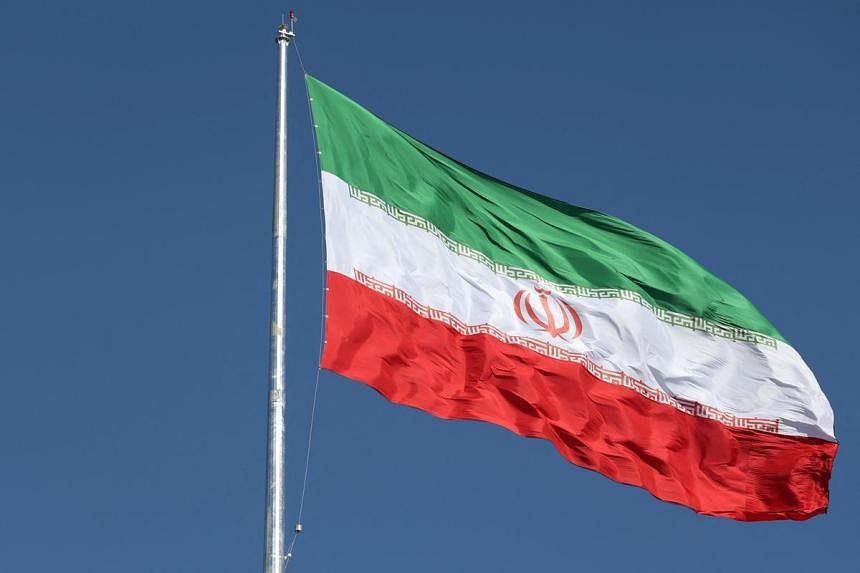VIENNA – As its 2015 nuclear deal with major powers has eroded over the years, Iran has expanded and accelerated its nuclear programme, reducing the time it would need to build a nuclear bomb if it chose to, though it denies wanting to.
A senior Iranian Revolutionary Guards commander said on April 18 that Iran could review its “nuclear doctrine” amid Israeli threats. It was unclear exactly what he meant, and that term tends to refer to countries that, unlike Iran, have nuclear weapons. Below is an outline of where Iran stands.
Collapse of the deal and breakout time
The 2015 deal introduced strict limits on Iran’s nuclear activities in exchange for the lifting of international sanctions against Tehran.
It slashed Iran’s stock of enriched uranium, leaving it only with a small amount enriched to up to 3.67 per cent purity, far from the roughly 90 per cent purity that is weapons grade.
The United States said at the time that a main aim was to increase the time Iran would need to produce enough fissile material for a nuclear bomb – the biggest single hurdle in a weapons programme – to at least a year.
In 2018, then-US President Donald Trump pulled the US out of the deal, reimposing sanctions on Tehran that slashed its oil sales and battered its economy.
In 2019, Iran started breaching the restrictions on its nuclear activities and then pushed far beyond them.
It has now breached all the deal’s key restrictions, including on where, with what machines and to what level it can enrich uranium, as well as how much material it can stockpile.
Its stock of enriched uranium, which was capped at 202.8kg under the deal, stood at 5.5 tonnes in February, according to the latest quarterly report by the UN nuclear watchdog that inspects Iran’s enrichment plants.
Iran is now enriching uranium to up to 60 per cent purity and has enough material enriched to that level, if enriched further, for two nuclear weapons, according to the theoretical definition by International Atomic Energy Agency (IAEA).
That means Iran’s so-called “breakout time” – the time it would need to produce enough weapons-grade uranium for a nuclear bomb – is close to zero, likely a matter of weeks or days.
The IAEA inspects Iran’s declared enrichment sites: an above-ground plant and a larger, underground one at its Natanz complex and another buried inside a mountain at Fordow.
As a result of Iran ceasing to implement elements of the deal, the IAEA can no longer fully monitor Iran’s production and inventory of centrifuges, machines that enrich uranium, and it can no longer conduct snap inspections. That has prompted speculation about whether Iran could have set up a secret enrichment site, but there are no concrete indications of one.
Weaponisation
Aside from uranium enrichment, there is the question of how long it would take Iran to produce the rest of a nuclear weapon and potentially make it small enough to put in a delivery system like a ballistic missile, should it choose to. This is much harder to estimate as it is less clear how much knowledge Iran has.
US intelligence agencies and the IAEA believe Iran had a coordinated nuclear weapons programme that it halted in 2003.
It worked on aspects of weaponisation and some work continued until as late as 2009, the IAEA found in a 2015 report.
Iran denies ever having a nuclear weapons programme, though Supreme Leader Ali Khamenei has said that if it wanted to, world leaders “wouldn’t be able to stop us”.
Estimates of how long Iran would need for weaponisation generally vary between months and about a year.
In March 2023, the top US military officer at the time, General Mark Milley, testified to US Congress that weaponisation would take Iran several months, though he did not say what that assessment was based on.
In a quarterly report in February 2024, the IAEA said: “Public statements made in Iran regarding its technical capabilities to produce nuclear weapons only increase the director-general’s concerns about the correctness and completeness of Iran’s safeguards declarations.”
Diplomats said those statements included a television interview by Iran’s former nuclear chief Ali Akbar Salehi in which he likened producing a nuclear weapon to building a car, and said Iran knew how to make the parts needed. REUTERS

